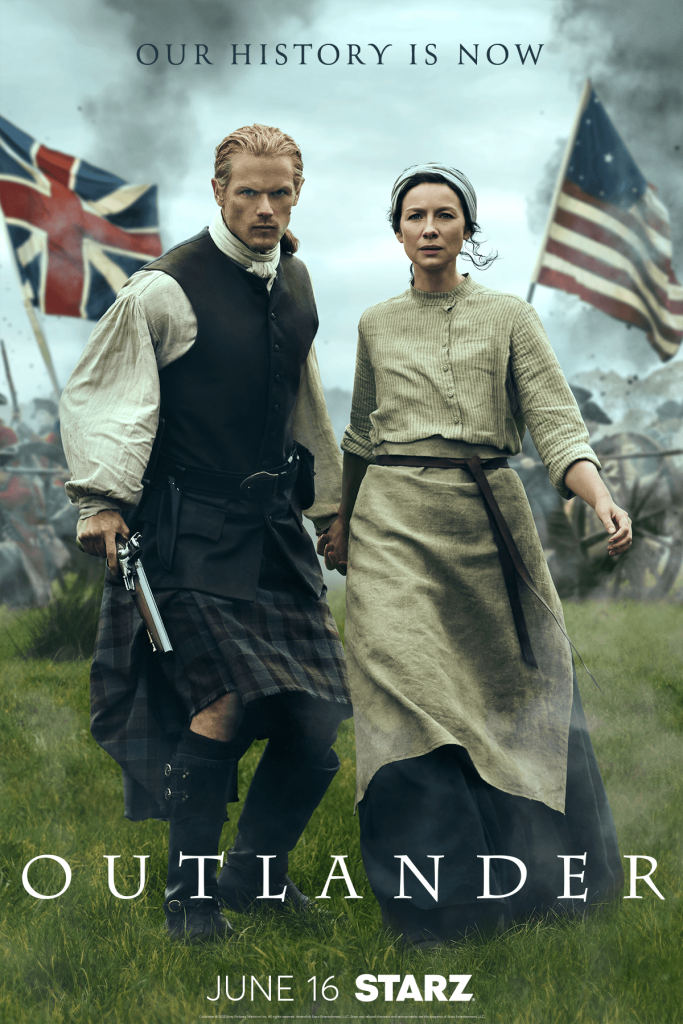Outlander (TV Series 2014)

Introducing Outlander: The TV Series
Outlander (2014–present) is a sweeping historical fantasy drama series that has captivated audiences with its blend of time travel, romance, adventure, and rich historical detail. Developed by Ronald D. Moore for Starz and based on Diana Gabaldon’s bestselling novel series, the show premiered on August 9, 2014, and has since become a global phenomenon, spanning eight seasons (with the final season airing in 2025). Centered on Claire Randall, a 20th-century nurse who time-travels to 18th-century Scotland, Outlander weaves a tale of love, survival, and cultural upheaval, anchored by the passionate relationship between Claire and Highland warrior Jamie Fraser. With its lush production values, compelling performances, and ambitious storytelling, the series has redefined historical drama for a modern audience. This article provides a comprehensive introduction to Outlander, exploring its premise, cast, production, themes, reception, and enduring legacy.
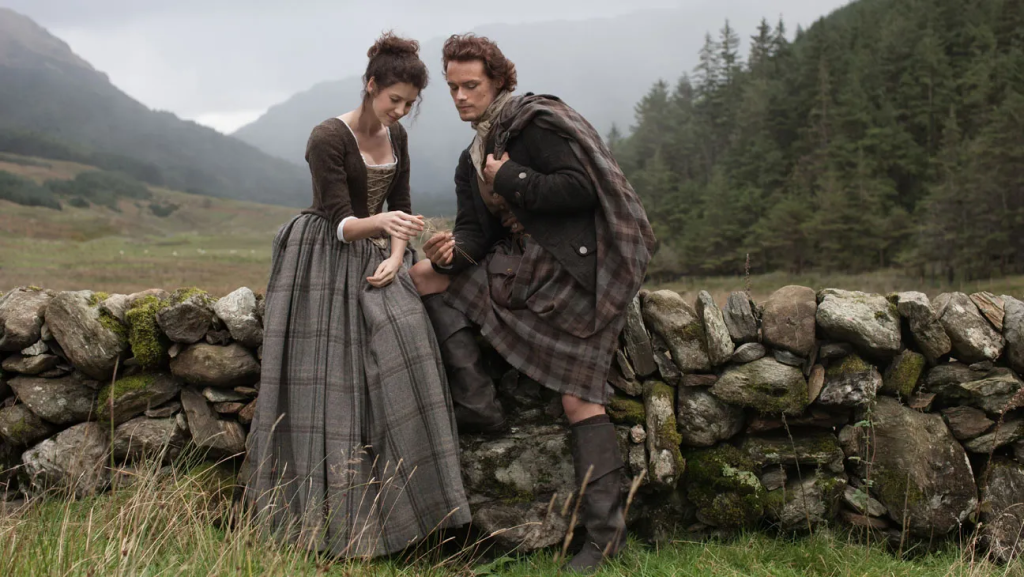
Premise and Plot Overview
Outlander begins in 1945, as Claire Randall (Caitriona Balfe), a former World War II combat nurse, honeymoons in the Scottish Highlands with her husband, Frank Randall (Tobias Menzies). After touching a mysterious standing stone at Craigh na Dun, Claire is inexplicably transported to 1743, landing in a Scotland torn by Jacobite rebellion and English oppression. Thrust into a dangerous world, she encounters Jamie Fraser (Sam Heughan), a charismatic Highland warrior, and is forced to navigate clan politics, violence, and her growing attraction to him, despite her loyalty to Frank.
The first season follows Claire’s struggle to survive and return to her own time, while her marriage to Jamie—initially a strategic alliance—blossoms into a profound love. As the series progresses, it spans continents and centuries, from the Jacobite Rising in Scotland to the American Revolution, with Claire and Jamie facing trials like war, betrayal, and family separation. Later seasons introduce their daughter, Brianna (Sophie Skelton), and her husband, Roger MacKenzie (Richard Rankin), who also grapple with time travel and historical upheavals. The narrative alternates between Claire’s 18th-century adventures and her 20th-century life, blending historical events with fantasy elements like the mystical stones.
Each season adapts roughly one of Gabaldon’s novels, with Season 1 covering Outlander, Season 2 Dragonfly in Amber, and so on, up to Season 8, which draws from Written in My Own Heart’s Blood and the upcoming Go Tell the Bees That I Am Gone. The series balances romance, political intrigue, and action, with time travel serving as both a plot device and a lens for exploring identity and destiny.
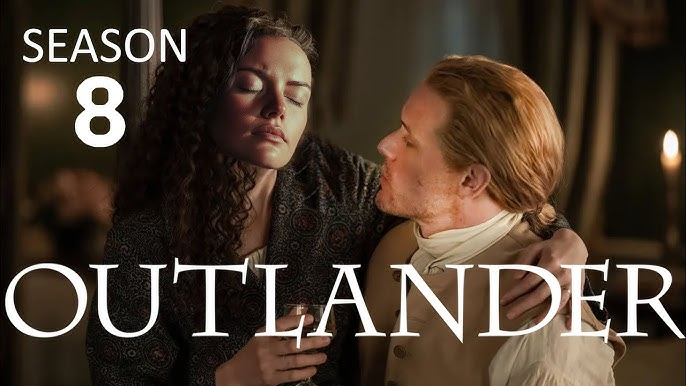
Cast and Characters
Outlander boasts a talented ensemble, with standout performances driving its emotional core:
- Caitriona Balfe as Claire Randall/Fraser: Balfe delivers a tour-de-force performance as Claire, a fiercely intelligent and resilient woman navigating love and survival across centuries. Her chemistry with Heughan is a cornerstone of the series.
- Sam Heughan as Jamie Fraser: Heughan’s portrayal of Jamie, a brave yet vulnerable Highland laird, blends rugged charm with emotional depth, making him a fan favorite.
- Tobias Menzies as Frank Randall/Black Jack Randall: Menzies excels in dual roles, playing Claire’s 20th-century husband and his sadistic 18th-century ancestor, a chilling antagonist in early seasons.
- Sophie Skelton as Brianna Fraser and Richard Rankin as Roger MacKenzie: Introduced in later seasons, Skelton and Rankin bring nuance to the Frasers’ daughter and son-in-law, whose time-traveling journeys mirror Claire and Jamie’s.
- Supporting Cast: Notable performances include Graham McTavish as Dougal MacKenzie, Lotte Verbeek as Geillis Duncan, David Berry as Lord John Grey, and Lauren Lyle as Marsali Fraser. The ensemble grows with each season, reflecting the series’ expansive scope.
The cast’s ability to portray characters across decades, often with aging makeup, adds authenticity, while Balfe and Heughan’s electric chemistry anchors the show’s romantic heart.
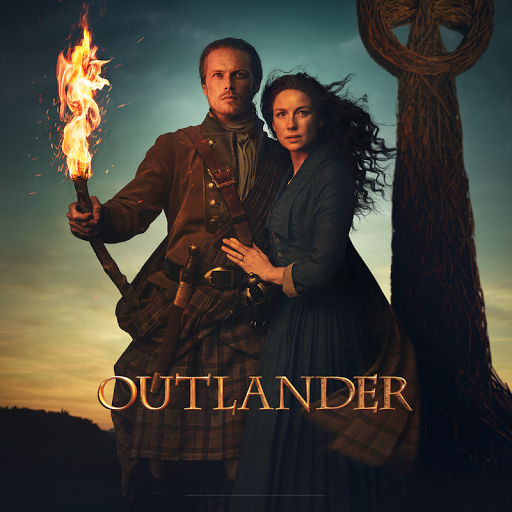
Production and Filmmaking
Developed by Ronald D. Moore, known for Battlestar Galactica, Outlander is a co-production between Sony Pictures Television and Left Bank Pictures, with Starz as the primary broadcaster. The series is filmed primarily in Scotland, using locations like Doune Castle (standing in for Castle Leoch) and the Highlands to evoke 18th-century authenticity. Later seasons expanded to France, Jamaica, and North Carolina, with studios in Cumbernauld, Scotland, serving as a hub for interior sets.
The production is renowned for its meticulous attention to historical detail. Costume designer Terry Dresbach crafted period-accurate outfits, from elaborate French gowns in Season 2 to rugged colonial attire in Season 4, earning Emmy nominations. Composer Bear McCreary’s evocative score, blending Celtic folk with orchestral themes, enhances the show’s emotional and cultural texture, with the iconic “Skye Boat Song” theme evolving each season. Cinematographers like Neville Kidd capture Scotland’s rugged beauty and the contrast of later settings, while production designer Jon Gary Steele creates immersive environments, from Highland castles to American frontier settlements.
Filming faced challenges, including harsh Scottish weather and the complexities of depicting time travel across multiple eras. The COVID-19 pandemic delayed Season 6, dubbed “Droughtlander” by fans, but the team’s commitment to practical locations and minimal CGI preserved the series’ grounded feel. Executive producers like Moore, Maril Davis, and Matthew B. Roberts have balanced fidelity to Gabaldon’s novels with creative adaptations, occasionally diverging to streamline the sprawling source material.
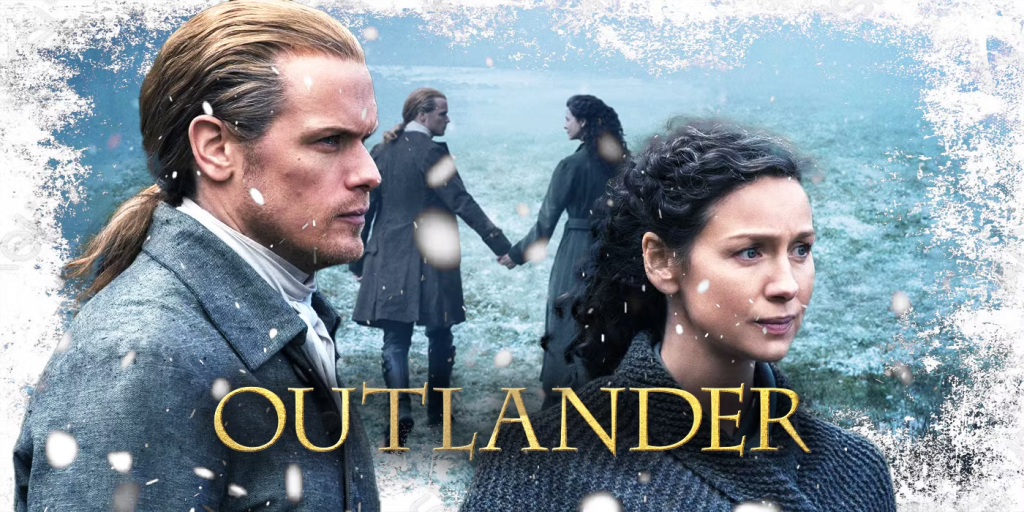
Themes and Symbolism
Outlander explores a rich tapestry of themes, elevated by its time-travel premise:
- Love Across Time: Claire and Jamie’s romance, tested by war, separation, and time itself, is the series’ emotional anchor, exploring whether love can transcend centuries.
- Identity and Adaptation: Claire’s struggle to reconcile her 20th-century values with 18th-century realities highlights themes of agency and cultural displacement, particularly as a woman in patriarchal societies.
- History and Destiny: The series weaves real events—like the Battle of Culloden and the American Revolution—into its narrative, examining whether time travelers can alter history or are bound by it.
- Trauma and Resilience: Characters face physical and emotional trials, from war to assault, with Claire’s medical knowledge and Jamie’s strength symbolizing healing and survival.
Symbolically, the standing stones at Craigh na Dun represent the liminal space between eras, while Claire’s wedding ring—forged from Jamie’s key—symbolizes their unbreakable bond. The Highland landscape itself becomes a character, embodying both beauty and brutality.
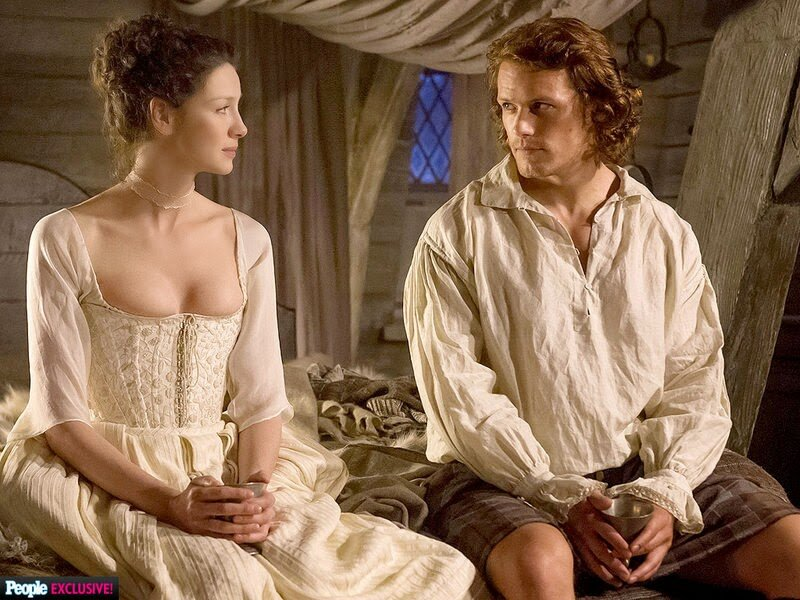
Reception and Cultural Impact
Outlander has garnered critical acclaim and a devoted fanbase, with a 89% approval rating on Rotten Tomatoes for Season 1 and consistent praise for its performances and production values. Critics, such as those from The New York Times, lauded its feminist perspective and genre-blending, though some noted pacing issues in later seasons due to the novels’ density. The series has earned multiple awards, including Saturn Awards for Best Fantasy Television Series and People’s Choice Awards, with Balfe winning an IFTA for Best Actress.
Commercially, Outlander has been a flagship series for Starz, driving subscriptions and spawning a global “Clan Outlander” fandom. Fans have organized conventions, book tours with Gabaldon, and even boosted Scottish tourism, with sites like Doune Castle seeing increased visitors. The show’s cultural impact includes mainstreaming historical romance for TV audiences and sparking discussions about gender, consent, and representation, particularly in its handling of sensitive topics like sexual violence.
By 2025, with Season 8 concluding the main series and a prequel, Outlander: Blood of My Blood, in development, the franchise shows no signs of slowing. The series has also inspired merchandise, from tartan-inspired clothing to whisky collaborations, and a passionate online community on platforms like Reddit and X.
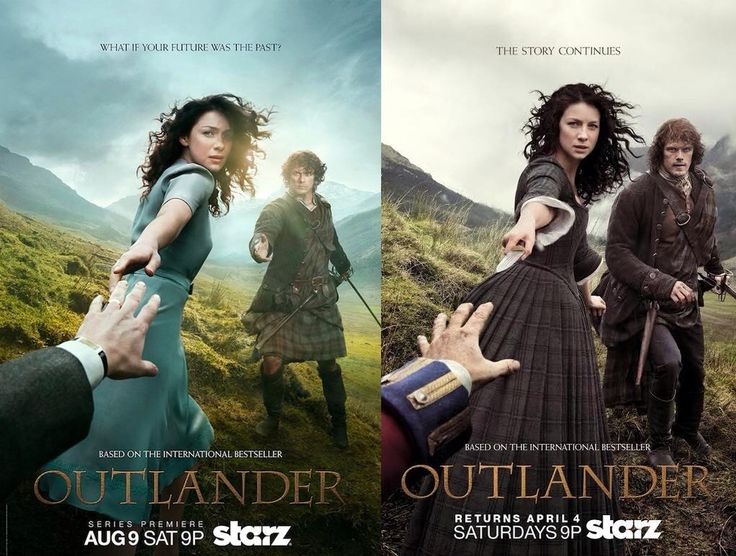
Why Watch Outlander?
Outlander is a must-watch for fans of epic storytelling, romance, and historical drama. Its blend of time travel, lush visuals, and unforgettable characters offers an immersive escape, whether you’re drawn to Claire and Jamie’s fiery love story or the intrigue of Jacobite rebellions. Caitriona Balfe and Sam Heughan deliver career-defining performances, supported by a sprawling cast and meticulous production values that bring 18th-century Scotland to life. The series’ willingness to tackle complex themes—love, trauma, and destiny—makes it more than a period piece, resonating with modern audiences.
Binge-worthy yet emotionally gripping, Outlander rewards viewers with its rich world-building and heart-wrenching twists. Whether you’re a history buff, a romance enthusiast, or a fantasy lover, the series offers something for everyone, inviting you to step through the stones and lose yourself in its timeless saga.
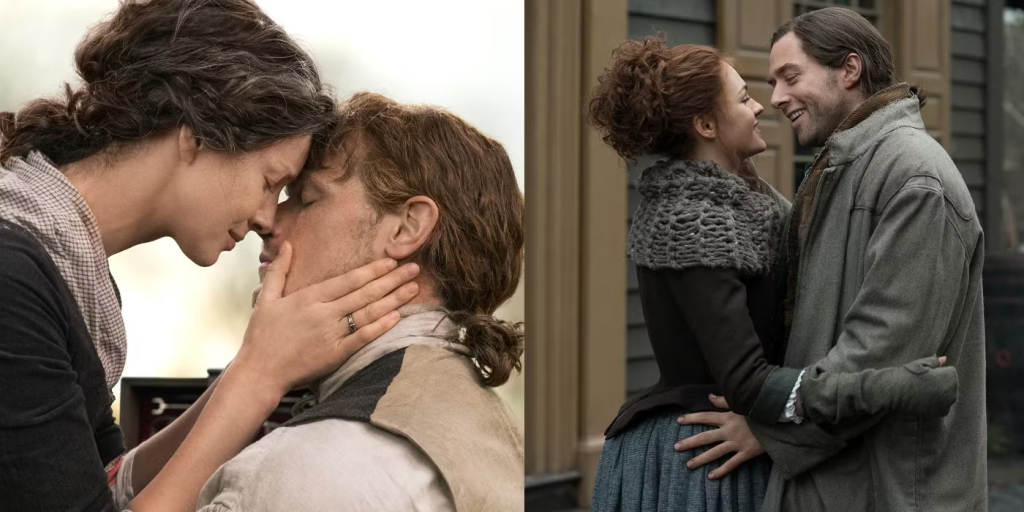
Conclusion
Outlander is a landmark television series that has redefined historical fantasy with its bold storytelling, unforgettable romance, and breathtaking production. Since its 2014 debut, it has transported viewers from the rugged Highlands to revolutionary America, following Claire and Jamie Fraser’s extraordinary journey across time. With a stellar cast led by Caitriona Balfe and Sam Heughan, a visionary creative team, and a passionate global fandom, Outlander has left an indelible mark on television and popular culture. As it approaches its final season in 2025, the series remains a testament to the power of love and resilience, inviting audiences to embrace the adventure, heartbreak, and magic of a story that transcends centuries.
